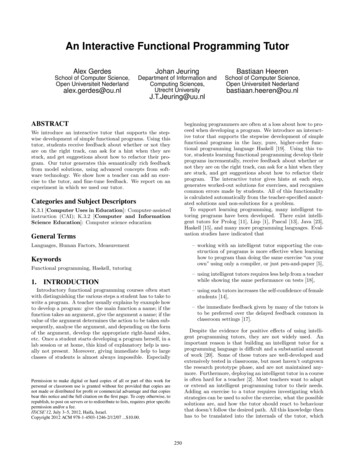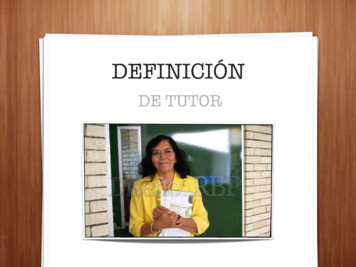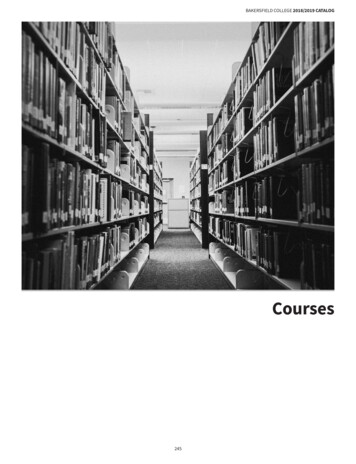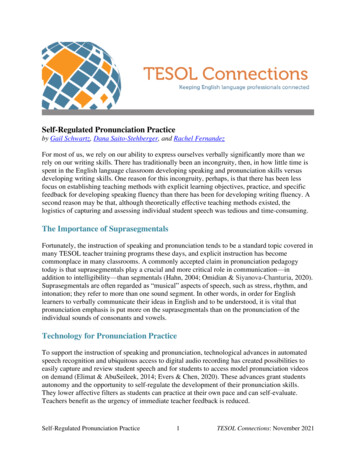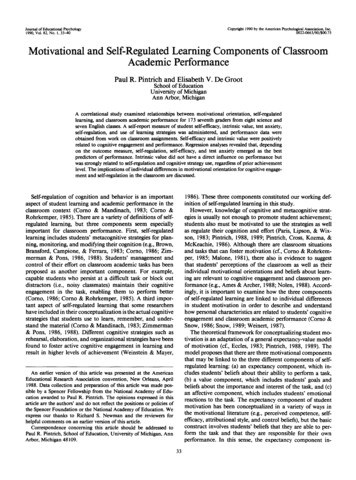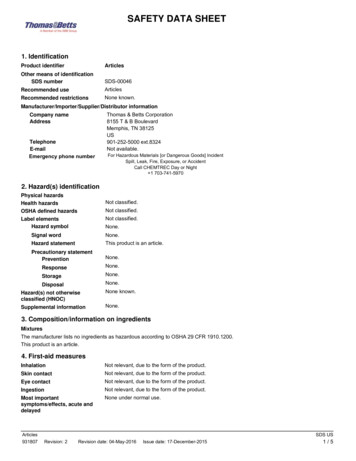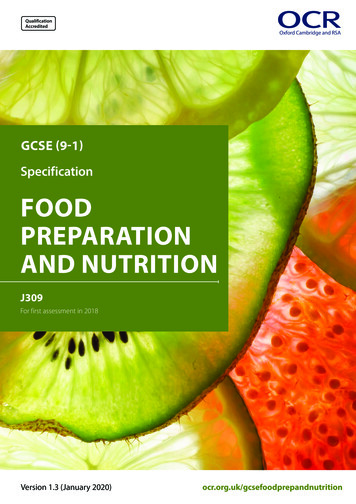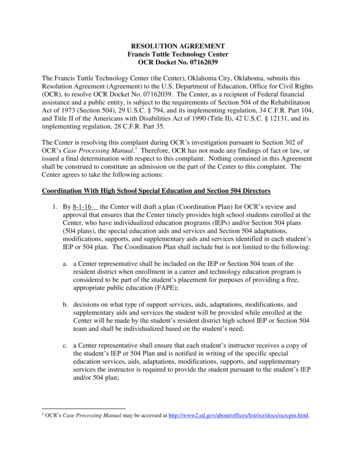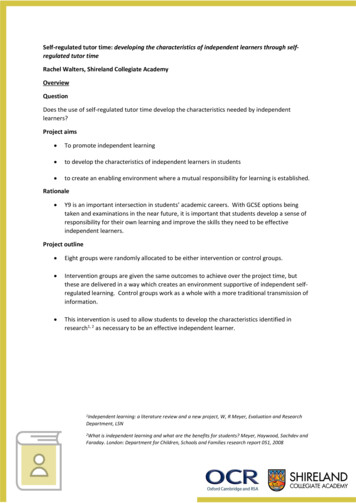
Transcription
Self-regulated tutor time: developing the characteristics of independent learners through selfregulated tutor timeRachel Walters, Shireland Collegiate AcademyOverviewQuestionDoes the use of self-regulated tutor time develop the characteristics needed by independentlearners?Project aims To promote independent learning to develop the characteristics of independent learners in students to create an enabling environment where a mutual responsibility for learning is established.Rationale Y9 is an important intersection in students’ academic careers. With GCSE options beingtaken and examinations in the near future, it is important that students develop a sense ofresponsibility for their own learning and improve the skills they need to be effectiveindependent learners.Project outline Eight groups were randomly allocated to be either intervention or control groups. Intervention groups are given the same outcomes to achieve over the project time, butthese are delivered in a way which creates an environment supportive of independent selfregulated learning. Control groups work as a whole with a more traditional transmission ofinformation. This intervention is used to allow students to develop the characteristics identified inresearch1, 2 as necessary to be an effective independent learner.1Independentlearning: a literature review and a new project, W, R Meyer, Evaluation and ResearchDepartment, LSN2Whatis independent learning and what are the benefits for students? Meyer, Haywood, Sachdev andFaraday. London: Department for Children, Schools and Families research report 051, 2008
ImpactEighty students responded to both the pre and post intervention surveys: 40 from the control groupand 40 from the intervention group. There were significant increases in students’ perceptions oftheir characteristics associated with independent learning. 75% (30/40) of students who received the intervention said their communication hadimproved, compared to only 7.5% (3/40) in the control group 82.5% (33/40) of students in the intervention group reported a self-perceived increase intheir motivation, compared to zero in the control group 37.5% (15/40) of the intervention group reported that they felt retention of informationimproved at the end of the unit, compared to 25% (10/40) in the control group 62.5% (25/40) of the intervention group identified an increase in their attention span,compared to 12.5% (5/40) of the control group 75% (30/40) of the students in the intervention group perceived that their problem solvingskills had significantly improved compared to 12.5% (5/40) in the control group resilience saw an increase in 62.5% (25/40) in the intervention group and a 35% (14/40)increase in the control group 70% (28/40) of students in the intervention group reported an increase in their team workskills compared to zero in the control group.There was a notable increase in all seven of the characteristics measured for the intervention group,this can be seen in the table onAttention spanProblem solvingResilienceTeam workIntervention Group% increase7582.537.562.57562.570Control Group% increase7.502512.512.5350Percentagepoints difference67.582.512.55062.527.570
Additionally, students were questioned about their relationships with their form tutor and peers. The majority of students in both the intervention and control groups reported that they hadpositive relationships with both their form tutor and peers before the intervention. Two students in the intervention group thought that their relationship with their tutor hadbecome less positive during the intervention. They believe less interaction with their tutorwas the reason for this. Four students in the intervention group reported an increase in peer relationships, this wasdue to more group work during form time. Four students reported that they felt their strong friendships had weakened during theintervention because they were encouraged to work in different groups and not with thesame students all of the time.Teacher comments “I found it difficult at first to allow the students more control over the pace at which theycompleted activities, but once I saw they were completing the tasks it helped to develop amore trusting relationship.” “It was good to see students develop both their group and individual work, and to gel anddevelop as a tutor group.” “It was beneficial for the students to be out of their comfort zones and have to make moredecisions for themselves.”
How to . . . The intervention group completed small project tasks over a six-week period, two sets ofinformation were given per week with specific instructions these were either completed as individuals or as part of small groups on student devices students were given an end point as to when tasks had to be completed, but they dictatedthe pace at which they moved towards completion tasks were set using our learning gateway, in the form of PowerPoint presentations usingOffice Mix to allow students to answer questions and detail group discussions, with workthen gathered from the learning gateway paper based projects could be used if devices are not available to all students content was relevant and engaging to studentsExamples of student work
Hints and tips Choose the content to be delivered in your tutor time sessions when designing how you want to deliver the content be mindful of how much tutorinteraction it will need difficult content may be covered which may stir up emotions and increase difficult orthought-provoking conversations ensure you identify when you want students to work independently and as a group clearly state the learning expectations and objectives at the beginning of each period,whether that be daily, weekly, bi-weekly etc. set specific tasks to ensure content is covered and objectives are met ensure students know the timescales they are working to place work in an area where all students can access it, whether this be online or paper based give clear details about where to put completed work be prepared to facilitate learning rather than delivering information in a more traditionalteaching method.SummaryThis project indicates that the self-regulated use of tutor time can be a good way to develop thecharacteristics of independent learners.
Appendix: example of one task
Self-regulated tutor time: developing the characteristics of independent learners through self-regulated tutor time Rachel Walters, Shireland Collegiate Academy Overview Question Does the use of self-regulated tutor time develop the characteristics needed by independent learners? Project aims To promote independent learning
